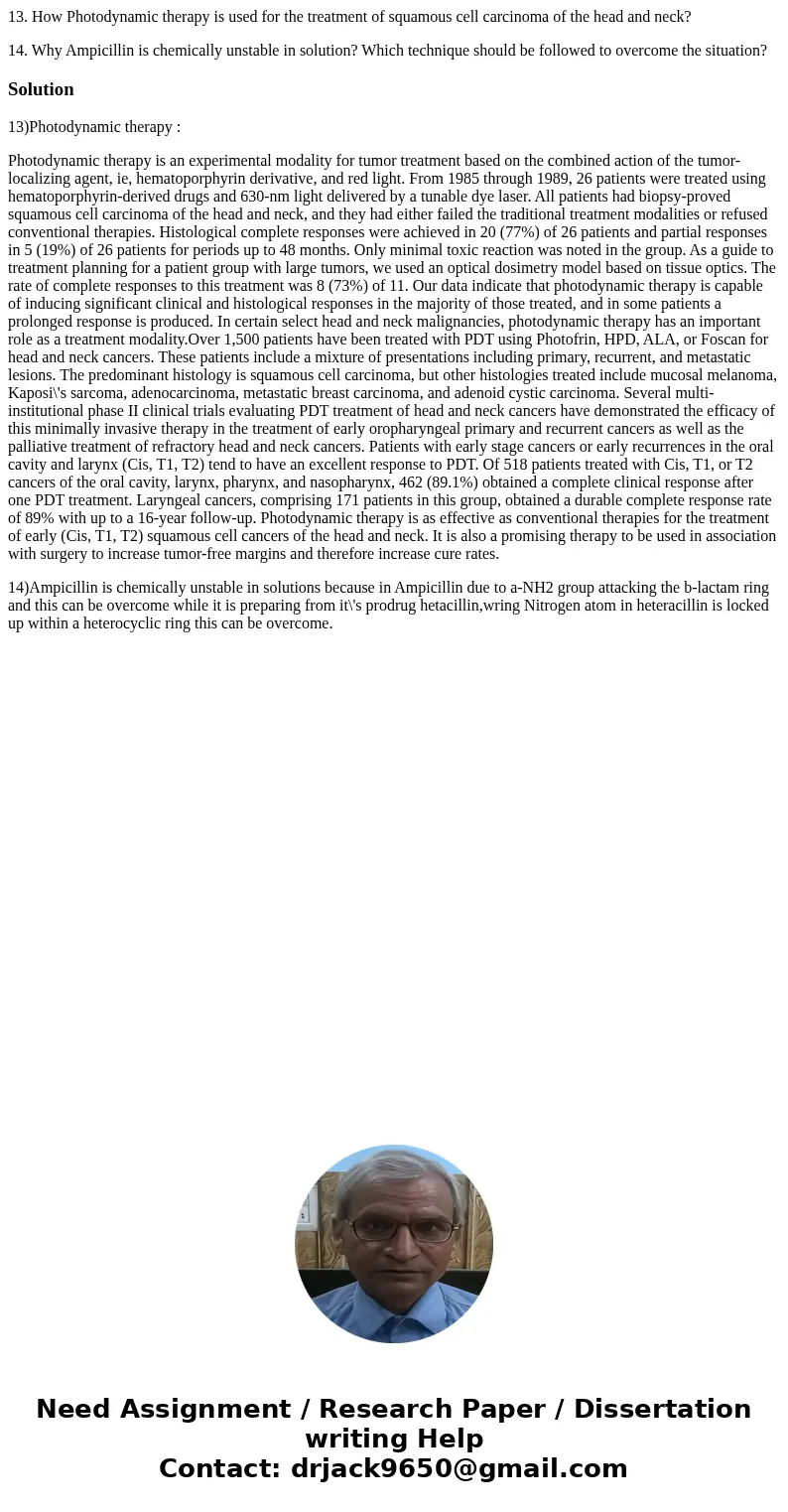13 How Photodynamic therapy is used for the treatment of squ
13. How Photodynamic therapy is used for the treatment of squamous cell carcinoma of the head and neck?
14. Why Ampicillin is chemically unstable in solution? Which technique should be followed to overcome the situation?
Solution
13)Photodynamic therapy :
Photodynamic therapy is an experimental modality for tumor treatment based on the combined action of the tumor-localizing agent, ie, hematoporphyrin derivative, and red light. From 1985 through 1989, 26 patients were treated using hematoporphyrin-derived drugs and 630-nm light delivered by a tunable dye laser. All patients had biopsy-proved squamous cell carcinoma of the head and neck, and they had either failed the traditional treatment modalities or refused conventional therapies. Histological complete responses were achieved in 20 (77%) of 26 patients and partial responses in 5 (19%) of 26 patients for periods up to 48 months. Only minimal toxic reaction was noted in the group. As a guide to treatment planning for a patient group with large tumors, we used an optical dosimetry model based on tissue optics. The rate of complete responses to this treatment was 8 (73%) of 11. Our data indicate that photodynamic therapy is capable of inducing significant clinical and histological responses in the majority of those treated, and in some patients a prolonged response is produced. In certain select head and neck malignancies, photodynamic therapy has an important role as a treatment modality.Over 1,500 patients have been treated with PDT using Photofrin, HPD, ALA, or Foscan for head and neck cancers. These patients include a mixture of presentations including primary, recurrent, and metastatic lesions. The predominant histology is squamous cell carcinoma, but other histologies treated include mucosal melanoma, Kaposi\'s sarcoma, adenocarcinoma, metastatic breast carcinoma, and adenoid cystic carcinoma. Several multi-institutional phase II clinical trials evaluating PDT treatment of head and neck cancers have demonstrated the efficacy of this minimally invasive therapy in the treatment of early oropharyngeal primary and recurrent cancers as well as the palliative treatment of refractory head and neck cancers. Patients with early stage cancers or early recurrences in the oral cavity and larynx (Cis, T1, T2) tend to have an excellent response to PDT. Of 518 patients treated with Cis, T1, or T2 cancers of the oral cavity, larynx, pharynx, and nasopharynx, 462 (89.1%) obtained a complete clinical response after one PDT treatment. Laryngeal cancers, comprising 171 patients in this group, obtained a durable complete response rate of 89% with up to a 16-year follow-up. Photodynamic therapy is as effective as conventional therapies for the treatment of early (Cis, T1, T2) squamous cell cancers of the head and neck. It is also a promising therapy to be used in association with surgery to increase tumor-free margins and therefore increase cure rates.
14)Ampicillin is chemically unstable in solutions because in Ampicillin due to a-NH2 group attacking the b-lactam ring and this can be overcome while it is preparing from it\'s prodrug hetacillin,wring Nitrogen atom in heteracillin is locked up within a heterocyclic ring this can be overcome.

 Homework Sourse
Homework Sourse